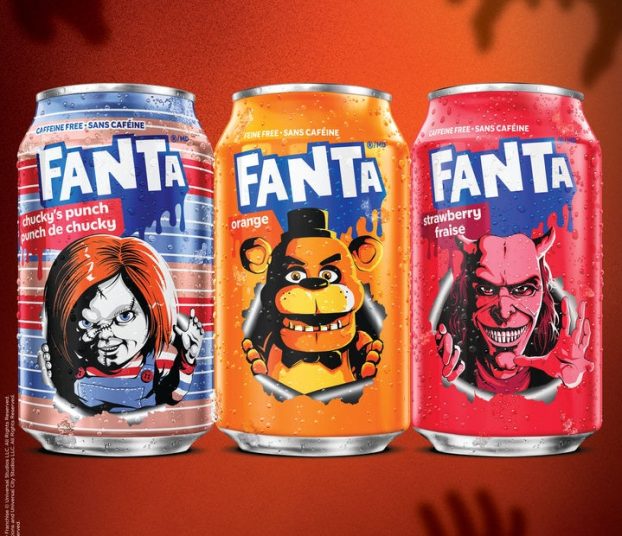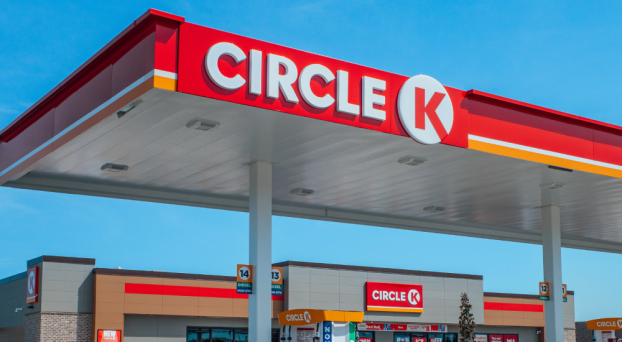It’s been a big year for the agency formerly known as Zig. A regular suspect in the AOY winners’ circle, this is its first competitive outing as CP+B, after being absorbed into MDC Partners’ Crispin Porter + Bogusky in July. There was a bit of shifting around (former Zig president Shelley Brown is now CEO of CP+B Canada) but no layoffs – and new clients like Bic, Celebrex and Second Cup were also welcomed into the fold.
Molson Canadian gets back to its roots
It was a focus group participant that said it best: “Molson Canadian is everywhere without saying much.” A brand that was once a mainstay in backyards, bars and patios across the country was now nearly irrelevant to Canadian beer drinkers.
As the world changed, Molson Canadian was wildly inconsistent in strategy and advertising, the only constant being its volume and share in decline. The challenge was to break indifference and get people to reappraise the brand.
For CP+B, the answer to connecting with beer drinkers was lying right under their feet – it’s the land that makes Canadians who we are. Research showed that nature functions as a safe haven that offers freedom from the stresses of modern life – a role not unlike that of beer.
The road ahead was clear: Molson Canadian is Made From Canada. That means being shaped by the vast, and at times humbling nature that also happens to provide the ingredients to brew beer.
Leaving behind the traditional beer target demographic (men, legal drinking age to 29) they began to target a mindset: people who believe in the virtue of Canadian beer and who value the freedom of the outdoors. The “Gifts” spot launched during the World Junior Hockey Championships, touting Molson Canadian as “Made from the best this land has to offer.” With the start of the Winter Games, “Awesomeness” was launched, an anthemic ode to “the best backyard in the world.”
Since beer is a social product, the “Gear Up For Gold” Facebook campaign and Molson Canadian Hockey House Olympic activation were launched. Both helped reinforce that the brand was doing things differently.
Molson Canadian market share and volume performance are above projections since the campaign launched, showing and sustaining volume growth for the first time in almost a decade. And loyal drinkers have come out of hiding – the Facebook page has grown to over 400,000 engaged, very vocal members.
Dusk scares up an audience
Scream was a Corus specialty network known for slasher flicks. Viewers ate up the gore, but advertisers were wary. Post-Twilight, more women were embracing supernatural/thriller entertainment, but they weren’t watching Scream. Corus decided to rebrand Scream as Dusk, a network that would win over vampire-loving ladies and the advertisers who woo them.
Schedules weren’t final, so convincing women that Dusk was for them without referencing specific shows or movies wouldn’t be easy. The idea was to give them the experience of watching Dusk. Similarly, advertisers would also need a Dusk experience since there were no audience numbers.
To reach women, online advertising featured interactive ads, such as a mirror shattering to reveal the Dusk logo. And in cinemas, a series of mini “flashes” built buzz for longer spots that ran pre-movie.

Advertisers were sent Boyfriend Replacement Arms – arm-shaped pillows designed to be squeezed during frightening and thrilling moments. To keep momentum going post-launch, “poisoned” chocolates were delivered to media buyers and planners.
Trade advertising shifted perception. Pre-launch, Dusk had 47 unique advertisers, six of them female-skewed. Post-campaign, that number grew 40%, 16 of which were female-skewed.
Consumer advertising scared up new viewers of both sexes. Within the first four weeks of launch, Dusk’s Average Minute Audience (AMA) of adults 18-49 increased by 146%. The female AMA increased by 136% within four weeks of launch.
Those results were sustainable as well. When compared with the August-December period the year before, Dusk’s reach grew 173% among adults 18-49, and 200% among women 18-49.
Environmental Defence rallies moms
December marked a critical month in the battle against climate change. With scientific evidence indicating that climate change is already surpassing predicted levels, the UN Climate Conference in Copenhagen was a crucial time for Canadians to let Stephen Harper know that they care about the environment and want action taken.
While many Canadians are aware of climate change, most didn’t view it as a personal issue. To get them to take action, it had to be personal. Mothers vote and care, making them the ideal target. They fret about school choices and extra-curricular activities, yet were not doing anything to safeguard the world their kids will inherit.
The video “Demonstration,” depicting a mob of pint-sized protesters, served as the emotional catalyst to enlist moms. It began as a PSA for TV which was re-cut for online use as well. A call to action at the end of the film drove to Takeactiononclimatechange.com, the official website for Moms Against Climate Change.

On the site, and through Facebook and Twitter, parents were asked to upload photos of their children to appear on wall projections in Ottawa reminding Stephen Harper who he really represents in Copenhagen.
After just a few weeks in market, the campaign was featured in over 100 national and international media outlets (print, broadcast and blogs) including multiple broadcast features on CBC News, and stories in the Globe and Mail, National Post, Vancouver Province, Vancouver Sun and Toronto Star.
Ikea makes any space beautiful
Fewer Canadians were reading the Ikea catalogue, and sales in 2009 were well below the previous year – spending on homes was not a priority, the mood was compromise. But the genius of Ikea is that it offers great design suited to virtually any budget, style and space. So the new tagline became: “Any space can be beautiful.”
The initial creative teased the catalogue by literally outlining real-world spaces yearning to be made beautiful. It drove to a contest microsite, Anyspacecanbebeautiful.ca where people could submit a photo or video of a space they needed help to beautify. Each submission had a chance to win a $15,000 Ikea makeover or secondary prizes. The spaces submitted were categorized into catalogue sections, directing people to room ideas. The microsite also allowed people to connect their entry to their Facebook profile, so they could spread the word about products.
Each week, three entrants were given design advice and a $500 Ikea gift card, and each winner was featured in a “tips” section as well as emailed out to all other entrants.
The microsite garnered 465,000 visits during the campaign and over 5,500 entries. Spontaneous recall of advertising also rose to the highest point to date. The campaign bolstered the impact of the catalogue and drove visits to Ikea.ca. Ikea’s market share increased by 3.3%, and during the campaign, Ikea.ca’s total traffic climbed by 25% compared to the same period the previous year. Daily website traffic hit a new record.
Axe hits the showers
Canadian guys use good old-fashioned bar soap, but Axe wanted them to consider a line of shower gels with fragrances such as Dark Temptation and Vice.
Axe understands how the mating game has changed – girls must be active participants – so they came up with an icebreaker for guys to use. Under the guise of “showering with friends and like-minded acquaintances,” Axe Showerpooling delivered a water conservation message to 18- to 24-year-old guys who largely tune out environmental issues. The 11,000 fans on Axe Canada’s Facebook page were used to spread the message. An environmental-style video explained the idea, and showed guys that being environmentally friendly didn’t have to be a chore. The “Start a Showerpool” app allowed users to invite their friends to become Showerpooling buddies. And because it was all for a good cause, the girls readily agreed. Further, the “Showerpooling Introduction Service” app allowed guys and girls to be introduced to each other through a mutual friend.
Media support came as banner buys and homepage takeovers leading up to Earth Day (April 22). This included rich media banners that ran the Showerpooling video, all driving directly to the Axe Facebook page.
Axe Canada got 103,042 page views, and the video garnered 147,277 views. The tenor of the conversation also changed, with a ratio of 24:1 positive to negative online mentions. And it’s going global: Portugal is next.

Jump to:
Silver: Adrenaline & doubt fuel Taxi
Bronze: Welcome to the club, Sid Lee
Honourable mention: BBDO’s winning insights





















